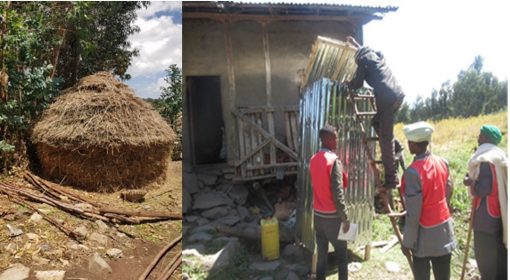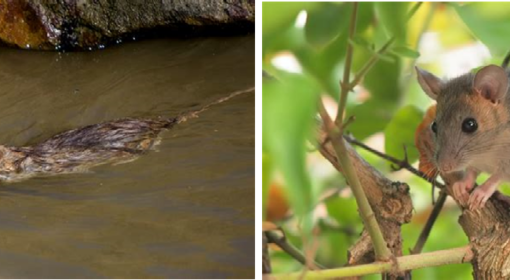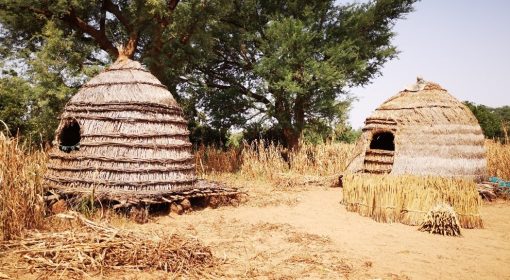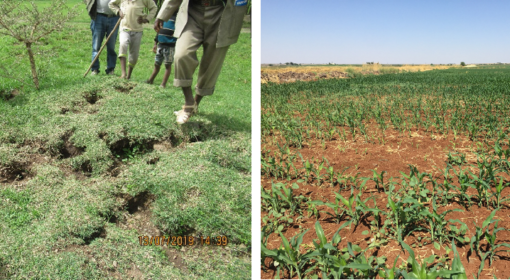by Girma Senbeta, Lucia Moreno Spiegelberg, Nardos Masresha and Guta Eshatu
Welcome to Wolaita Sodo, one of the oldest cities in the Southern Nations, Nationalities, and People Region (SNNPR) in Ethiopia, established 113 years ago. Located at the foot of Mount Damota, Wolaita Sodo serves as the administrative center for Sodo Zuria District and is also the headquarters for the SNNPR. The city is one of the 22 reform cities selected by the government for further development to enhance its attractiveness and standards. It is a major transportation hub, connecting six national and regional transport routes.
Most urban residents in Wolaita Sodo earn their livelihoods through small and medium businesses such as hotel services, cereal stores, mill houses, cloth making, and pastries. However, the city faces socioeconomic challenges, including housing shortages, health issues, and unemployment, primarily due to rapid population growth and significant rural-to-urban migration. Additionally, Wolaita Sodo struggles with severe rodent problems, particularly around the Bashir Riverbanks, dense informal housing areas, and near the foot of Mount Damota.
The area of study is located along one of the Bashir Rivers that crosses the city of Sodo, where houses are distributed spontaneously and surrounded by vegetation. Key contributing factors to the rodent problem include poor waste management and ineffective rodent control methods. Trash accumulates along the riverbanks, dragged by the river, providing rodents with ample hiding spaces and abundant food resources. This environment allows rodents to thrive and reproduce actively, exacerbating the problem.

Enter the SCARIA project, which stands for Sustainable Community-bAsed mitigation of Rodent Issues in African cities. This initiative aims to develop a science-guided and community-driven strategy for Ecologically Based Rodent Management (EBRM) in four African cities: Wolaita Sodo in Ethiopia, Niamey in Niger, Cotonou in Benin, and Antananarivo in Madagascar.
The project’s primary goal is to establish local working groups comprising academic experts, public health officials, and community representatives. In Ethiopia, the team from MetaMeta has already gained valuable experience in developing EBRM strategies in the rural context of Amhara. Their efforts have been recognized with the prestigious Olam food prize, highlighting their expertise and success in this field. By leveraging the knowledge and experience of local communities and experts, the SCARIA project aims to create sustainable solutions that improve public health and quality of life in African cities. In Ethiopia this involved the universities of Wolaita Sodo and the Swedish Agricultural University, MetaMeta Ethiopia, together with local actors, e.g. businesses, health officials, community representatives and other stakeholders.
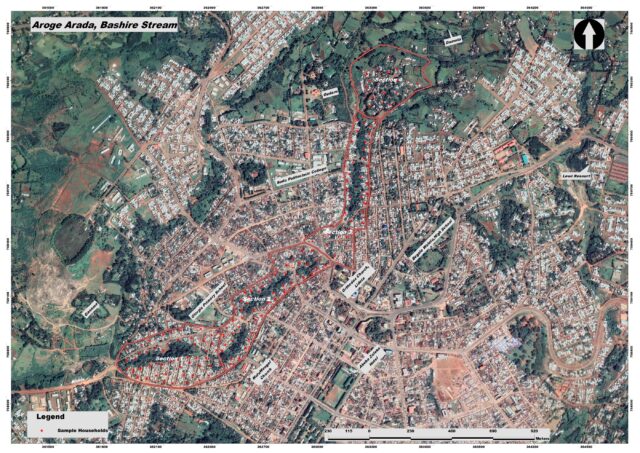
In July and August 2023, the SCARIA team embarked on a mission to understand the depth of the rodent problem in Wolaita Sodo. Locally working groups were created with the objective of assessing human-wildlife conflict (HWC) and the associated health risks. The project focused on studying the socio-economic, ecological, and epidemiological indicators related to urban rodents and their impacts. Using a combination of Knowledge, Attitude, and Practice (KAP) surveys, focus group discussions (FGDs), and stakeholder meetings, the team gathered insights from the local community and various stakeholders. This holistic approach ensured that the voices of residents, local authorities, and other key actors were heard and considered.
The KAP surveys involved 156 households, providing a snapshot of the community’s demographic profile. Most respondents were young, aged between 20-40 years, and most families had an average size of 5.2 members. The study revealed that nearly 95% of respondents reported the presence of rodents in their homes or workplaces. Rodent encounters were frequent, with 77% observing them daily, impacting various aspects of life, from health to infrastructure. Over a third of respondents have experienced health issues attributed to rodents, including rat bites, which pose severe health risks. Rodents also enter food storage facilities, where they defecate, increasing the risk of spreading pathogens to the population.
Also, the economic impact stood out since households reported substantial financial losses due to rodent-related damages, with an average annual cost for stored crop damage and infrastructural damage of app. 150 US dollars per household, a major financial burden for the people of Wolaita Sodo. To solve this problem, many residents have tried techniques like owning cats, but their presence is not enough to control the population of rats, the reason most likely being that rats greatly outnumber the cats and thus cats basically cannot keep up. Given the severity of rodent issues, the local population mostly resorts to cleaning up surroundings (a.o. cutting bushes and weeding, clearing of debris carried by floods during the rains) around the house and by applying chemical rodenticides obtained from local vendors.
People are already trying to tackle rodent problems, and they spend an average of 51 US dollars on these efforts per year. While the study highlighted the prevalence of self-initiated rodent control (93%), most of the community appears interested in collaborative efforts (52%). To date, it is not common for the community to take up collective rodent control; however, it probably has great potential to increase its cost-effectiveness.

In multiple discussions with community representatives, participants shared their understanding of the seasonal patterns of rodent infestations. They noted that rodent occurrences peaked during the rainy season, as the rodents sought refuge from flooding. Commercial areas such as grain stores and grinding mill houses were identified as particularly vulnerable to rodent infestation due to the availability of food and shelter. Poor waste management was highlighted as a major contributor to the rodent problem, underscoring the need for systematic upkeep of the river environment. Additionally, participants pointed out that ineffective rodent control methods have hindered progress.
The final workshop, organized by MetaMeta in collaboration with Wolaita Sodo University in Sodo town, revealed that the community had become more aware of the economic damage caused by rodents. This increased awareness followed stakeholder surveys and awareness campaigns conducted by local working groups. Previously, residents had underestimated the extent of the damage, but the intervention—where selected graduates from Wolaita Sodo University educated the community through focus group discussions, questionnaires, and other data collection methods—brought the issue to light. As a result, many community members began using cats as a natural solution to the rodent problem. One participant shared his experience: “I initially thought the rodent damage in my house was minimal and didn’t take it seriously. However, the awareness campaign made me realize the damage was significant. I bought a cat for 250 ETB (4.17 USD), but it wasn’t big enough to control/manage the rodents (rats). I used chemical rodenticides, which ended up poisoning the cat when it ate a dead rat. I then bought another cat for 300 ETB (5 USD) and took better care of it.” This story underscores the community’s heightened awareness and proactive approach to rodent management.
The community appreciated the awareness created by the SCARIA project’s intervention, which helped them understand the severity of the rodent problem and the importance of biological control measures. This intervention raised awareness and promoted sustainable rodent management practices. Additionally, participants highlighted that porcupines, locally known as “Jart,” were also damaging horticultural crops. From economic losses to health risks and community perceptions, the study lays the groundwork for informed recommendations and interventions aimed at mitigating the challenges posed by rodent-related issues.
The discussions underscored the necessity for a multifaceted approach involving community conversations, education, and capacity building. The study also identified potential opportunities for synergy with existing initiatives and programs such as WASH (Water, Sanitation, and Hygiene), the Urban Productive Safety Net Project (UPSNP), and Urban Greenery and Beautification, suggesting the potential for cross-sector collaboration. Participants mentioned regular cleaning initiatives along the riverside, rehabilitating houses of low-income groups, and improving public latrines as exemplary activities to be integrated into these existing programs.
These actions would significantly benefit efforts to deny rodents access to food and shelter, which are vital for their proliferation. They also advocated for strong community engagement through conversations involving religious leaders, elders, youth, and women. Emphasizing training and education on effective rodent management, the people suggested sharing successful experiences from other regions where rodent management has been effectively implemented. Additionally, the presence of Wolaita Sodo University and the Wolaita Sodo Agricultural Technical and, Vocational, Education and Training College is also a significant factor in promoting the utilization of local knowledge and practices, while incorporating scientific research, to ensure the sustainable management of rodents in the area.
The study unequivocally demonstrates that the community faces significant economic losses, health risks, and property damage due to rodent infestations. To effectively tackle these issues, the findings highlighted the importance of implementing rodent management strategies that actively involve the community, improving waste management practices, and adopting holistic approaches to urban planning. The research also highlights the extensive scale of damages and problems associated with rodents, underscoring the pressing need for collaboration and coordination among multiple sectors.
This is a crucial step in the right direction for tackling urban rodent issues. However, it is also an urgent appeal to give more attention to Southern cities where exposure to rats is massively higher. Addressing this pervasive problem requires immediate and focused efforts to protect the health and well-being of these communities.
This blog is part of a series on SCARIA, where we try to walk towards sustainable community-based mitigation of rodent issues in the African cities of Niamey in Niger, Cotonou in Benin, Wolaita Sodo in Ethiopia, and Antananarivo in Madagascar. This research aims to contribute to a broader discussion on community and actor engagement. It’s crucial to acknowledge the responsibilities of each actor and how these may shift over time. There are no simple solutions to the (poorly recognized) rodent problem, especially in dense and disadvantaged urban settings.
